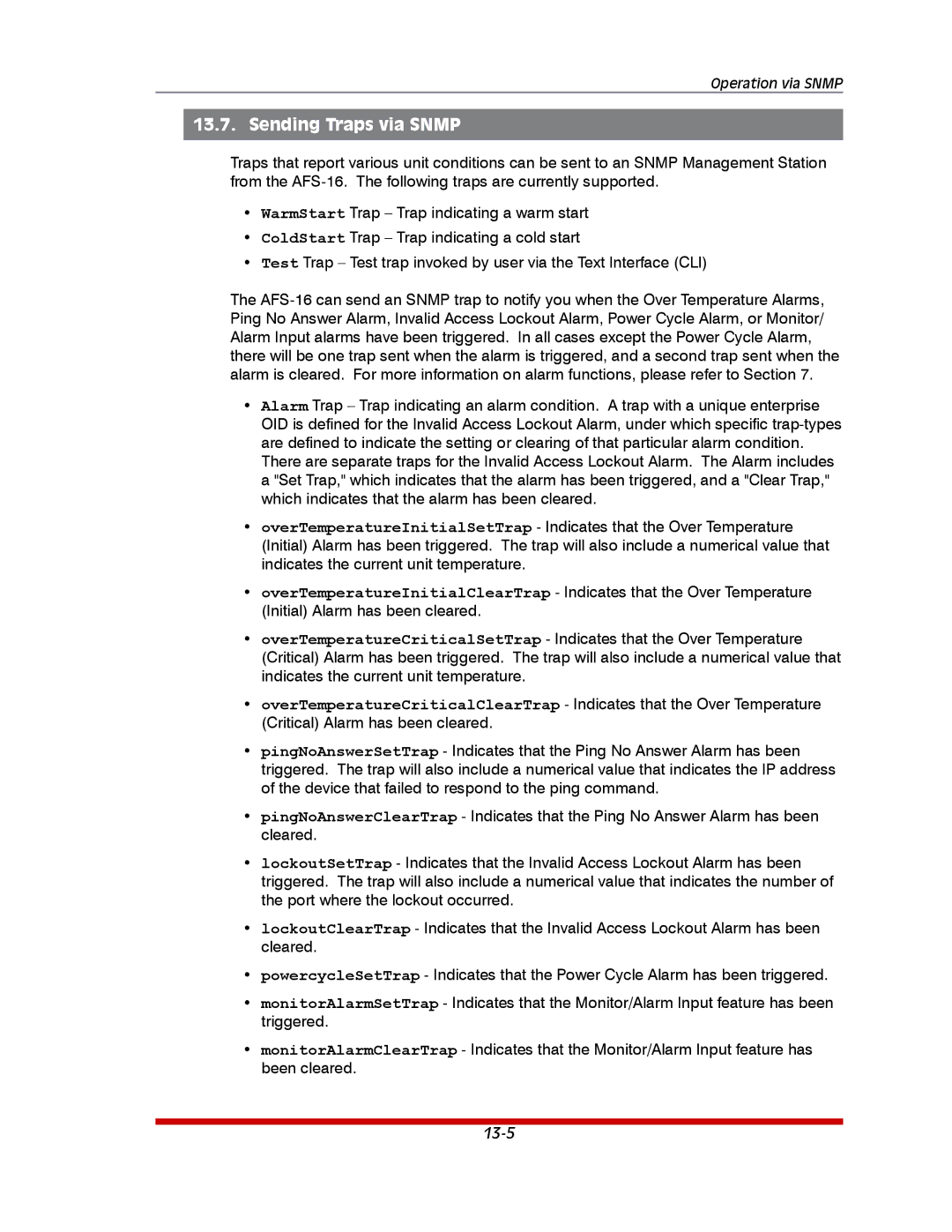
Operation via SNMP
13.7. Sending Traps via SNMP
Traps that report various unit conditions can be sent to an SNMP Management Station from the
•WarmStart Trap – Trap indicating a warm start
•ColdStart Trap – Trap indicating a cold start
•Test Trap – Test trap invoked by user via the Text Interface (CLI)
The
•Alarm Trap – Trap indicating an alarm condition. A trap with a unique enterprise OID is defined for the Invalid Access Lockout Alarm, under which specific
•overTemperatureInitialSetTrap - Indicates that the Over Temperature (Initial) Alarm has been triggered. The trap will also include a numerical value that indicates the current unit temperature.
•overTemperatureInitialClearTrap - Indicates that the Over Temperature (Initial) Alarm has been cleared.
•overTemperatureCriticalSetTrap - Indicates that the Over Temperature (Critical) Alarm has been triggered. The trap will also include a numerical value that indicates the current unit temperature.
•overTemperatureCriticalClearTrap - Indicates that the Over Temperature (Critical) Alarm has been cleared.
•pingNoAnswerSetTrap - Indicates that the Ping No Answer Alarm has been triggered. The trap will also include a numerical value that indicates the IP address of the device that failed to respond to the ping command.
•pingNoAnswerClearTrap - Indicates that the Ping No Answer Alarm has been cleared.
•lockoutSetTrap - Indicates that the Invalid Access Lockout Alarm has been triggered. The trap will also include a numerical value that indicates the number of the port where the lockout occurred.
•lockoutClearTrap - Indicates that the Invalid Access Lockout Alarm has been cleared.
•powercycleSetTrap - Indicates that the Power Cycle Alarm has been triggered.
•monitorAlarmSetTrap - Indicates that the Monitor/Alarm Input feature has been triggered.
•monitorAlarmClearTrap - Indicates that the Monitor/Alarm Input feature has been cleared.
